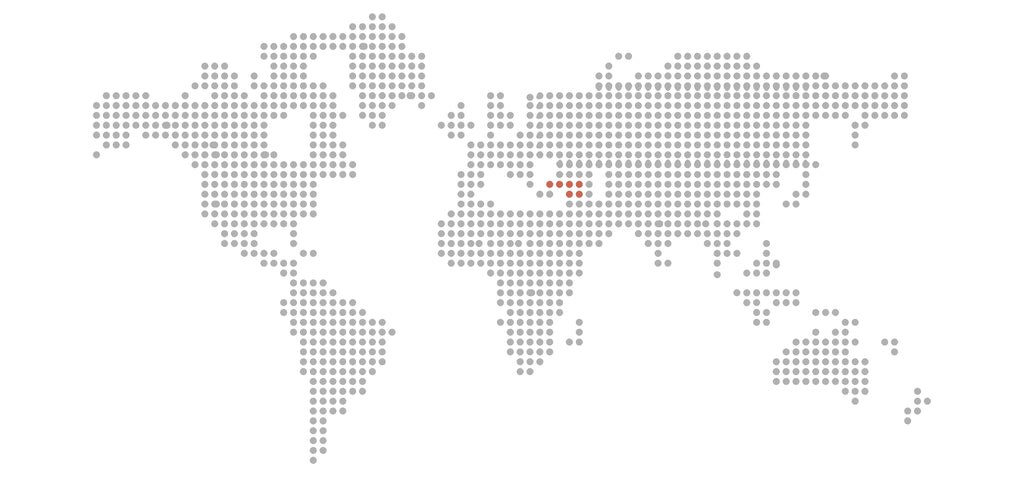mahabis inspiration // five coffee breaks around the world
The fuel of the 21st century worker. Coffee.
Whether you grab a filter coffee on the way to work, down a double espresso, or drag out a latte over a lunch break, there’s no denying that a great deal of us depend on that mid-morning caffeine hit to keep us energised throughout the day.
With thousands of coffees sold every hour and Starbucks outlets spreading into over 65 countries, it would be easy to assume that we’re consuming more caffeine today than ever before.

But there is a rich history to the coffee break, and coffee cultures have existed for centuries. Across the globe, there are hundreds of different rituals surrounding coffee drinking and the significance of the global coffee break for relaxing and socialising is not to be underestimated. We take a look at how the morning coffee varies around the world. Check out the different rituals below, and click on any of the images to share via twitter.
1. Vietnam

Traditionally, Vietnamese coffee is served through a ‘phin’ filter and sweetened with generous amounts of condensed milk. It’s a rarity to see Vietnamese coffee served black, as the dark-roasted brew itself is incredibly strong.

photo: pinterest
And for the more brave/ experimental coffee drinkers, you can also sample ‘Cà Phê Trứng’, which involves a raw egg yolk whisked into the mix. Breakfast and coffee rolled into one.

photos: 365til30.com, brian glodney
These beautiful shots were taken by photographer Brian Glodney on a boat trip through the mystical waters of Halong bay. There aren’t many views better than this to look upon as you kick back with your journal, slippers on and sip a morning coffee.
2. Ethiopia

The Ethiopian coffee ceremony is one of the most recognisable traits of Ethiopian culture. Far from a ‘just add water’ cup of instant, each Ethiopian coffee is a celebration of culture and involves considerable preparation.

photos: aiic 2015 assembly
Lasting up to three hours, and repeated multiple times a day, each ceremony involves the washing, roasting and grinding of the coffee beans. Throughout Ethiopia, these ceremonies are social events, and a time or discussing local politics, life, community and family.
The ornate cups are surrounded by straw and clay pots that each serve a purpose. Served with popcorn and a thick bread, the coffee is delicately poured from a height.

photos: binoandfino, and flickr
In the presence of a visitor, performing a coffee ceremony is almost obligatory, and an invitation to a private ceremony is considered equivalent to a mark of friendship and respect. It is impolite to retire from the ceremony before three cups are consumed, as the third round 'baraka' is thought to bestow a blessing.
"In a world where time has long become a commodity, the Ethiopian coffee ceremony takes us back to a time when value was given to conversation and human relations" - Emily Doyle, epicurean.com
We love the central role that coffee plays in Ethiopian culture, and that despite what is planned for the day ahead, time is always set aside for this social event. The Amharic phrase 'buna tetu', that literally translates as 'drink coffee', applies not only to the act of drinking, but to socialising (quite similar to how 'meeting for a coffee' in England is a pseudonym for a friendly catch-up).
3. Sweden

Taking it a step further, coffee breaks in Sweden are actually protected by law. The working day, and even the school day, may be interrupted twice for ‘fika’- the swedish tradition of a ‘coffee diversion’. For every hour on the clock, workers can earn up to five minutes of coffee time.

photo: munchies.vice.com
The average citizen drinks nearly four cups a day, making the nation one of the biggest consumers of coffee worldwide, third in the world to only Finland and Norway. More than just an energising beverage, coffee in Sweden is a ritual.
"While Americans take theirs to go and Italians like it standing by the counter, Swedes prefer it nice and slow [...] In Sweden, quality of life equals downtime, it follows that pausing to gather for coffee and pastries is common at most Swedish workplaces."
Across the spacious country, fika is a time for people to come together for a social and relaxed affair. Rather than downing blistering hot coffees squeezed into the morning routine, the Swedish take pleasure in devoting time to a coffee and enjoying an elongated break from busy day-to-day life.
Classic black drip coffee or boiled coffee is served alongside sweet pastries, and Swedish coffee shops are designed specifically to allow relaxation and socialising.
4. Turkey

Turkey is another country where coffee takes an integral role in daily life and culture. Served in small cups and accompanied by a glass of water, the sweet short coffees are consumed on a daily basis and also ceremonial occasions.
When prepared properly, Turkish coffee is served with a thick froth on top and filled to the edge of the cup. The drink is often accompanied with a game of cards and shared cigarettes amongst locals.

photos: paulina muratore and turkishcoffee.us
In addition to a symbol of hospitality and friendship, there is also a spiritual dimension to coffee drinking in Turkey. The rounds left in the coffee cup are often used for fortune telling.
5. Iceland

Perhaps an unusual pick, but in fact the average Icelander consumes 8.3 kilograms of coffee beans per year, making them the world’s fourth largest coffee consumers per capita. With a lack of big commercial chains, independent coffee outlets have flourished as a result.
Whilst the coffee beans themselves mostly originate from Colombia, Brazil and Indonesia, Iceland’s baristas over in the Northern hemisphere have perfected local roasting methods. Whereas the emphasis in Sweden is on the quantity of coffee, Iceland focuses on quality when it comes to the roasting techniques of imported coffee beans.

photos: stefán karlsson, brad weber
The Italian latte is the most popular Icelandic coffee of choice. Judge of the Icelandic Barista Championship suggests this is perhaps due to the ‘excellent taste of fresh Icelandic milk’.
In addition to coffee shops and cafes, the value of coffee in the home is also important. The original purpose of coffee in Icelandic homes was to treat visitors to a warm welcoming drink amongst the cold climate. This has since moved to a daily habit, but some traditions persist in older communities. (There even existed a superstition around the order coffee was prepared- if you mixed the cream before the sugar you wouldn’t get married for seven years, but if you left sediment in the cup after drinking, it was a good omen!).
So, next time you take a coffee break, take some lessons from these coffee experts around the world. In a century where time has become a commodity, and we're hastily fitting more into our days than ever before, the coffee break allows for a momentary pause.
If you enjoyed this post, why not give it a share using this ready-to-go tweet.


